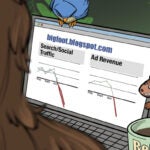The advertising department at The New York Times before the coronavirus pandemic is completely different than the one in motion now.
The team is working remotely. In-person meetings and planned live events are out. And the hot topics with clients have completely changed.
So The New York Times is trying to be helpful as clients search for how to evolve their campaigns.
“Clients are asking what have other brands done, what do readers want, and are there any changes to how people are using the site?” said Sebastian Tomich, global head of advertising and SVP at The New York Times.
He talked to AdExchanger last week about how the Times’ advertising business is charting a different course as the coronavirus pandemic overturns the status quo.
AdExchanger: What’s changed in the past couple of weeks?
SEBASTIAN TOMICH: This event has upended everything, from what we are talking about with our clients, to how we’re operating departments, to live events, obviously what the newsroom is covering and how we’re communicating with employees. It feels like an eternity ago.
What are your advertiser clients doing differently?
The majority of clients have taken a step back to think, “How can we adjust our message to be more relevant? What do people want from us right now?” So there’s a brief moment of pause.
Any creative program we were working on has to go through a filter – is this appropriate right now? For example, we were working on a creative program with an advertiser about working abroad. As you can imagine, that message needs to be rethought.
What Times content are people consuming?
The Daily has doubled its audience year over year. There’s been a huge spike recently, and we’re up to 4 million downloads a day, which puts our daily reach on par with “Good Morning America” or Colbert. We lifted our paywall for coronavirus, and we launched a dedicated newsletter that got 1 million subscribers in the three weeks since it launched. Cooking is seeing sharp increases in readership, and health readership is up over 200%.
How do you plan for the uncertainty around how long the pandemic will last and how severely it will affect advertising?
We’re reacting first in making sure our department is safe and high functioning during a moment of chaos, and that we are serving our clients during a moment of need. In terms of how the business is performing, we’re really focused on not doing anything short term.
We’re thinking about what it will look like on the other side. This is a moment in time, but one that will have residual impact not just in terms of spend, but behavior. How confident are people going to be about spending money? What are they going to spend their money on?
What are you seeing in terms of keyword blocking around coronavirus terms?
I tend to react negatively to any advertiser trying to jury-rig some way to avoid the coronavirus issue, because I don’t think it matters what page you’re next to right now. If you are present in this moment, it doesn’t matter if you’re next to an article about coronavirus or an article about kittens. Your message has to be appropriate. And the person on the other side is feeling the same way.
I struggle with the idea that a marketer is going to de-prioritize quality journalism by using these tactics to avoid coronavirus. I would advocate strongly to not try to avoid it.
What kind of offerings do you have for brands that do want to curate what they’re next to?
We’re getting requests both to avoid it and to hit it head on. We always have products to avoid hard news, and contextual products that [SVP of ad innovation] Allison Murphy and her team have built around avoiding polarizing topics, and those could be effective to avoid hard news. But even in lifestyle coverage we are going to make references because we’re all at home.
What brands want to be next to coronavirus content?
Anything to do with financial planning right now or health care. And media [advertisers] around streaming guides. We’re treating all of those on a case-by-case basis, because we want to have the utmost sensitivity around any sense that someone is trying to capitalize on this moment. But in general, it’s brands trying to help and have a positive message.
What’s an example of how you’re thinking more long term vs. short term?
Live events. Even though they’re being canceled or postponed now, there is no world where The New York Times is not in the live events business next year. So the planning has gone to how we think people will adapt.
We took every live event through June and converted to virtual. So Andrew Ross Sorkin of DealBook, who would normally do conferences, just did a conference call with his subscribers. And for something like our food festival, later this year, we’re thinking about how comfortable people will be in large settings. Do we need to do a hybrid virtual and physical event?
Are there any projects you’re fast-tracking due to the coronavirus?
We’re definitely ramping up audience insights: what we can do to help brands understand the changes in how people are using the Times, but also what they’re looking for from brands.
Our creative team is constantly auditing what’s out there in the marketing landscape and coming up with a point-of-view about how brands should talk right now. That’s where we can be most of help right now.
This interview has been edited and condensed.
Follow Sarah Sluis (@SarahSluis) and AdExchanger (@adexchanger) on Twitter.














